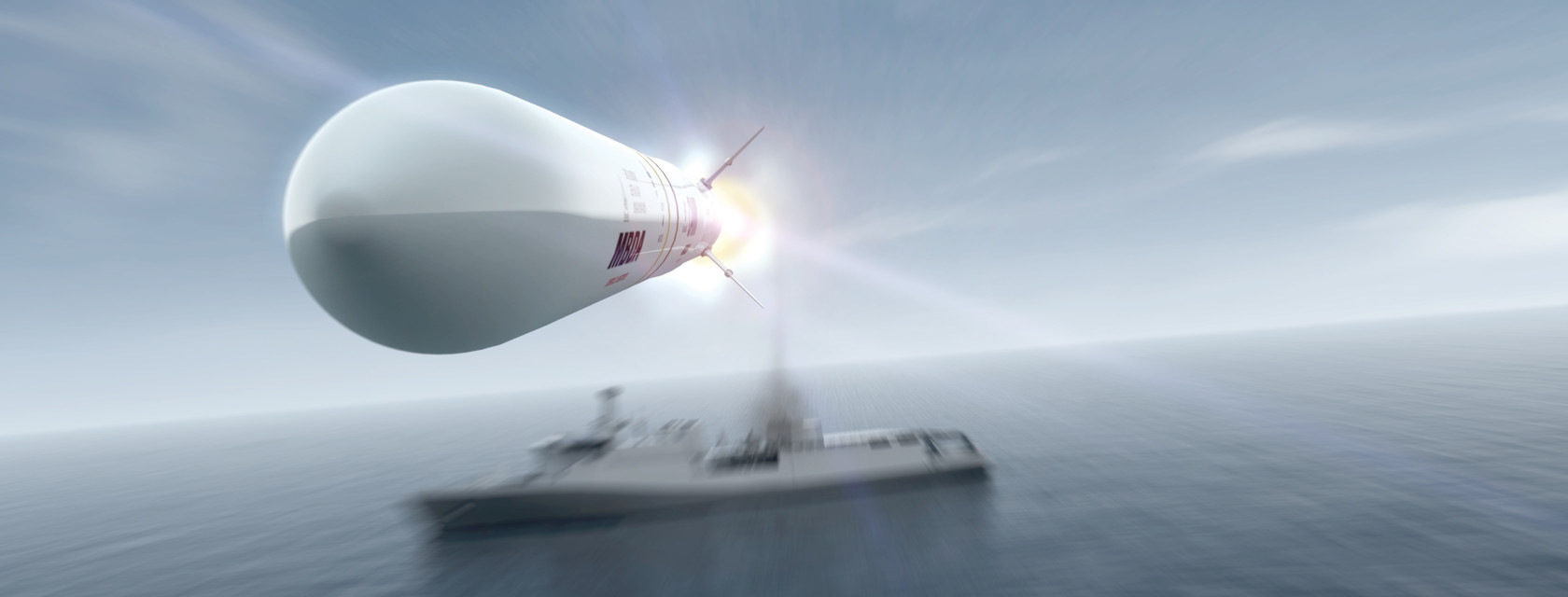CMS 330: Empowering Allied Naval Combat Systems Integration
Over the years, I often dealt with MBDA. The European company – and it is truly an integrated European company – builds many of the advanced missiles available to allied forces. And as the West faces the stark realities of the need to build a true arsenal of democracy that leverages ALL of U.S. and allied investments, resources and capabilities, the ability to use a range of such capabilities to provide integrated defense capability is critical.
For example, MBDA builds the Sea Captor missile, which is the primary defense capability for the Royal Navy’s Type 23 and Type 26 frigates.
This is how MBDA describes it:
Sea Ceptor is the next-generation, ship-based, all-weather, air defence weapon system.
Through the use of new advanced technologies, Sea Ceptor provides complete protection against all known and projected air targets. The weapon system is now in full-scale development for the UK MOD as the principal air defence capability for the Royal Navy’s Type 23 and Type 26 frigates.
Sea Ceptor will protect both the host ship and high value units in the local area. The Weapon System has the capability to intercept and thereby neutralise the full range of current and future threats including combat aircraft and the new generation of supersonic anti-ship missiles. Capable of multiple channels of fire, the system will also counter saturation attacks.
So why am I starting an article on the Lockheed Martin Canada combat management system, the CMS 330 this way?
Well, let us look at this New Zealand Defence Force Press Release dated 1 December 2023:
Two successful missile firings from frigate HMNZS Te Mana signaled the final tick for both Te Mana and HMNZS Te Kaha’s capability release following their Frigate Systems Upgrade.
This week HMNZS Te Mana conducted two Sea Ceptor surface-to-air missile firings in the East Australia Exercise Area, which completes the final part of the frigate’s testing and evaluation process.
This was the first test firing of the Sea Ceptor since the Anzac-class frigates had received the missile system during their combat, surveillance and counter-measures upgrade in Canada.
And underlying this success was the upgrading of the New Zealand ships with the integration of the Canadian combat management system, CMS 330.
A Lockheed Martin press release dated three years earlier (December 21, 2020) highlighted this effort as follows:
Lockheed Martin Australia and New Zealand congratulates the Royal New Zealand Navy on the arrival of HMNZS Te Kaha in Devonport, New Zealand, following modernization upgrades undertaken in British Columbia, Canada by Lockheed Martin Canada.
As the prime systems integrator, Lockheed Martin Canada was responsible for integrating the upgraded systems on two ANZAC Class Frigates. HMNZS Te Kaha was equipped with Lockheed Martin Canada’s CMS 330 combat management system, as well as a new suite of sensors and weapons, providing the ship’s crew with superior capabilities and advanced protection for a variety of modern naval operations.
With a flexible and dynamically evolving combat management system, new sensors and weapons can be added to a combat ship keeping it abreast of dynamic changes in the technology of evolving warfare.
At the Euronaval show held in Paris in early November 2024, I had the chance to talk with Glenn Copeland, General Manager, Lockheed Martin Canada Rotary & Missions Systems (RMS). In the discussion, he highlighted the flexibility of the CMS330, its relative affordability, and its use by many allied navies.
He referred to this system as the Canadian tactical interface system as it grows beyond the Halifax class to the new class of Canadian capital ship, the River -class destroyer.
As Copeland noted: “The CMS330 for the Halifax class was designed to provide data fusion from the sensors and systems on board the ship and assesses the threat. Then from the threat, you apply your doctrine, and then use your response triggers to deliver a threat response.”
He noted that CMS 330 has been a key part of integrating above and below water sensors in support of the core Canadian ASW mission, and its ability to do so is a key reasons allies have bought into the program as well.
Copeland underscored that CMS330 is currently on 42 platforms and new international customers are on the horizon.
In effect, Canada is providing through this program a significant defense contribution to the broader alliance of democratic nations.
The featured graphic is of Sea Ceptor: Credit: MBDA

